Bhogar-Siddhar
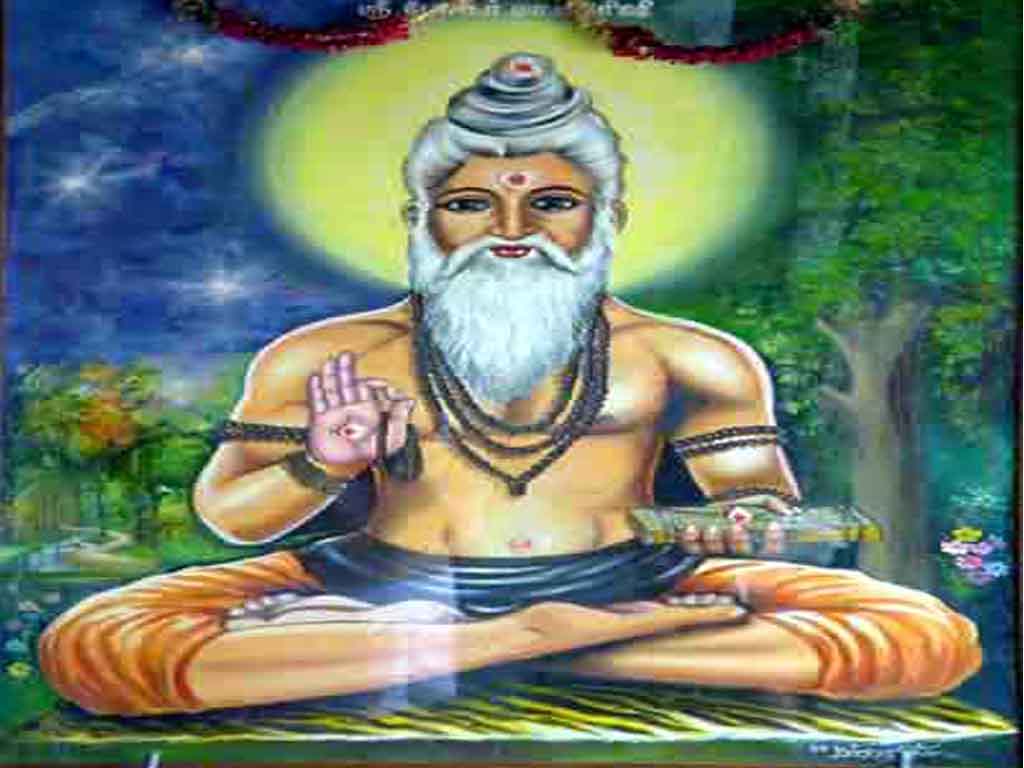
The definition of enlightenment has many expressions; the value of perfection can turn the unreal into a spectacular world of intrigue of what is possible in this world that we live in. In the era 3000 B.C. that we so misjudged as belonging to the primitive period has recorded the life of at least one person who surpassed most human beings in the quest for knowledge and the power of wisdom.
3000 B.C. a world that was still waking up to evolution witnessed the presence of Siddhar Bogar, a powerful astrologer, and a yogi who had mastered the science of medicine perfectly.
The highlights of his life maybe plenty but those that would intrigue us today are recorded in the Saptakanda, a work that describes in detail the presence of an aircraft that took him all the way to China where he imparted his knowledge. Another intriguing fact is that he used 9 poisons or the Nava Bhashanam to make a statue of Lord Muruga (Dandapani vigraha) which has since been installed in the Murugan temple at Palani near Madhurai and is still worshipped. The interesting aspect of this idol is that its composition of 9 poisons (made out of 4000 rare herbs), elicits life giving essence into the fluids of libation as the abhishekam progresses which cures all human diseases when consumed.
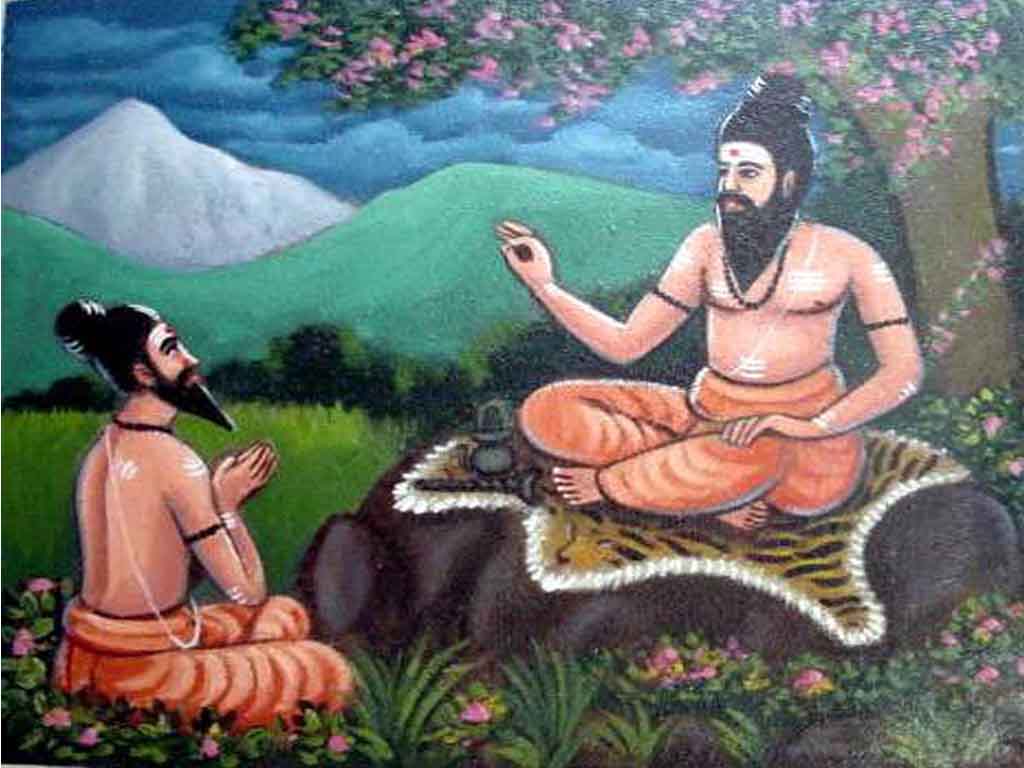
Bogar or Bhogar or Boganathar was a renowned South Indian siddhar and medical physician,[1] who lived in the 3rd to 5th century CE.[2] Bogar was considered to be a Chinese Taoist[3] philosopher who came to South India to learn medicine. Bogar is considered as a contemporary of Thirumoolar.
Bogar is a Siddhar , he is considered as one of the 18 siddhars born in the world. According to epigraphical sources and his book Bogar Seven thousand his period is around 3000 B.C. Bogar born at India and visited China in search of truth of life, he gained knowledge in medicine, astrology, spritiuality, yoga etc.
Bogar's guru, Kālāngi Nāthar, is believed to be a Chinese whoattained siddhi in South India and thus became included among theEighteen Siddhars.
It is said that as per the last wishes of his guru, Bhogar proceeded to China to spread the knowledge of siddha sciences and strangely enough his journey is said to have been made with theaid of an aircraft; he demonstrated to the Chinese the details of the construction of the aircraft and later built for them a sea-going craft using a steam engine. The details of these and other experiments demonstrated by Bhogar in China are clearly documented in the Saptakanda.
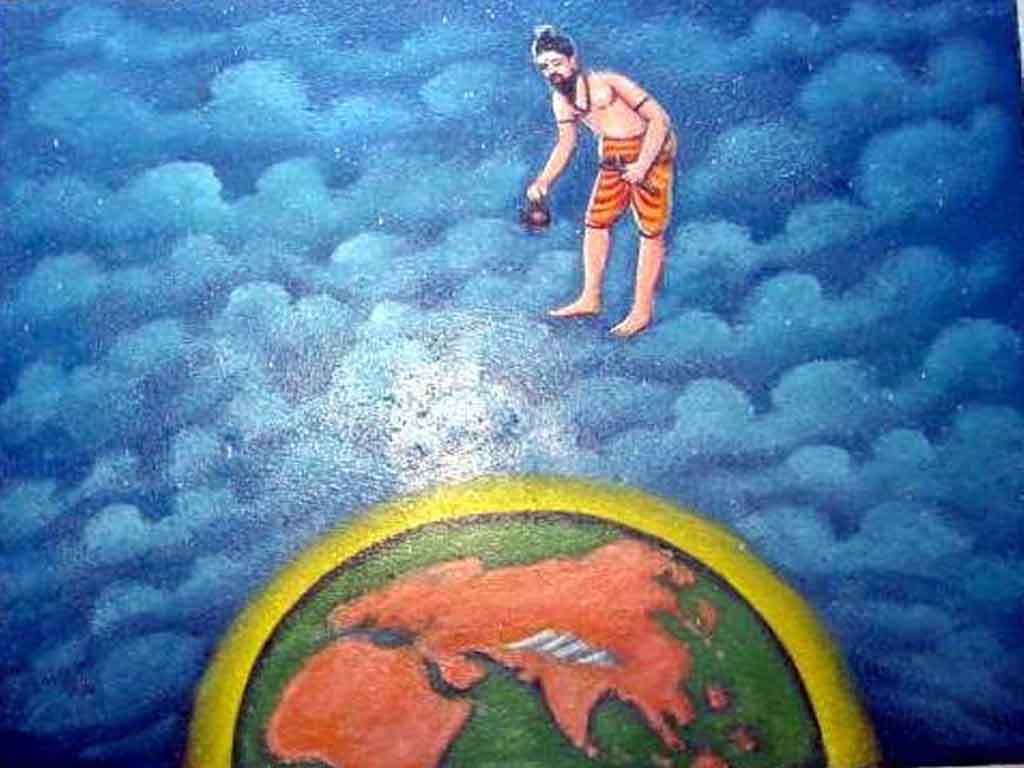
Bogar anticipating that in due course of period, human beings will suffer from large number of disease. As an expert in medicine he used 4448 rare herbs and made 9 poisonous medicine, mixing these 9 poisons into one needs great knowledege and skill, to make a Master Medicine ( One medicine to cure all disease ). Thirumoolar also discuss one such Master Medicine in his book Thiru Mandiram. With the consultation of Agasthiar ( Father of Ayurvedic Medicine) and other siddhars Bogar mixed the 9 poisons ( Nava Bashanam ) and made the Master Medicine in the form of Lord Murugan which is currently worshiped at Palani Murugan temple.
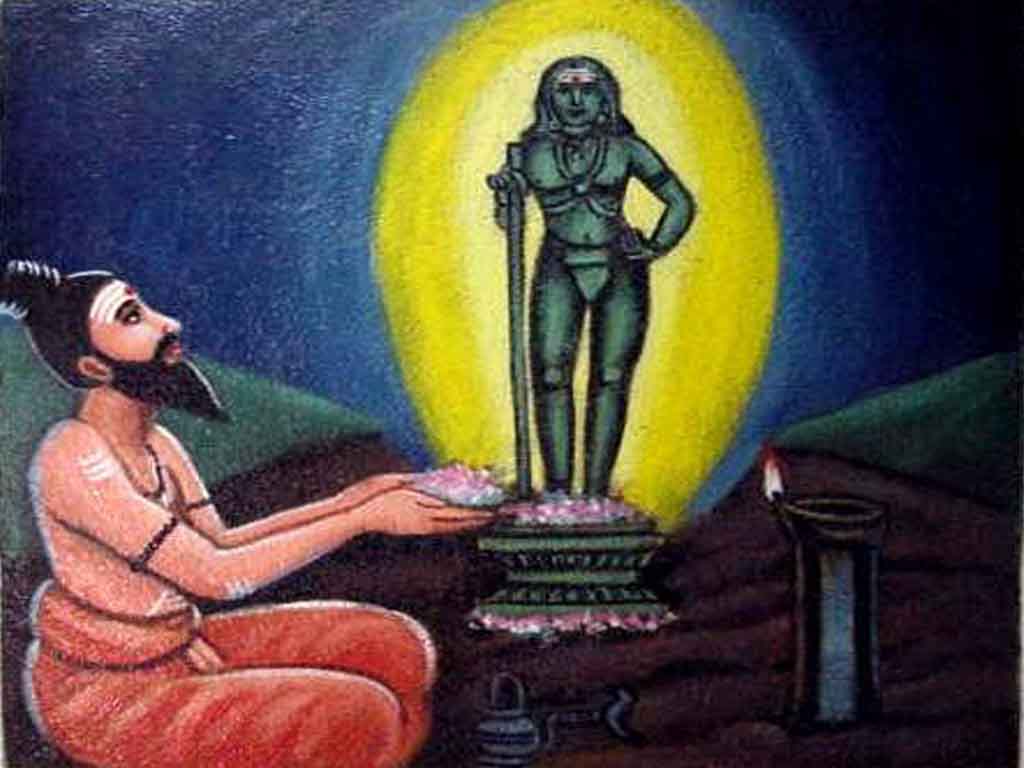
There is a place near Palani Hill called Thanasiappan Temple which is the place were Bogar mixed the Nava Bashanam and made the Murugan idol.
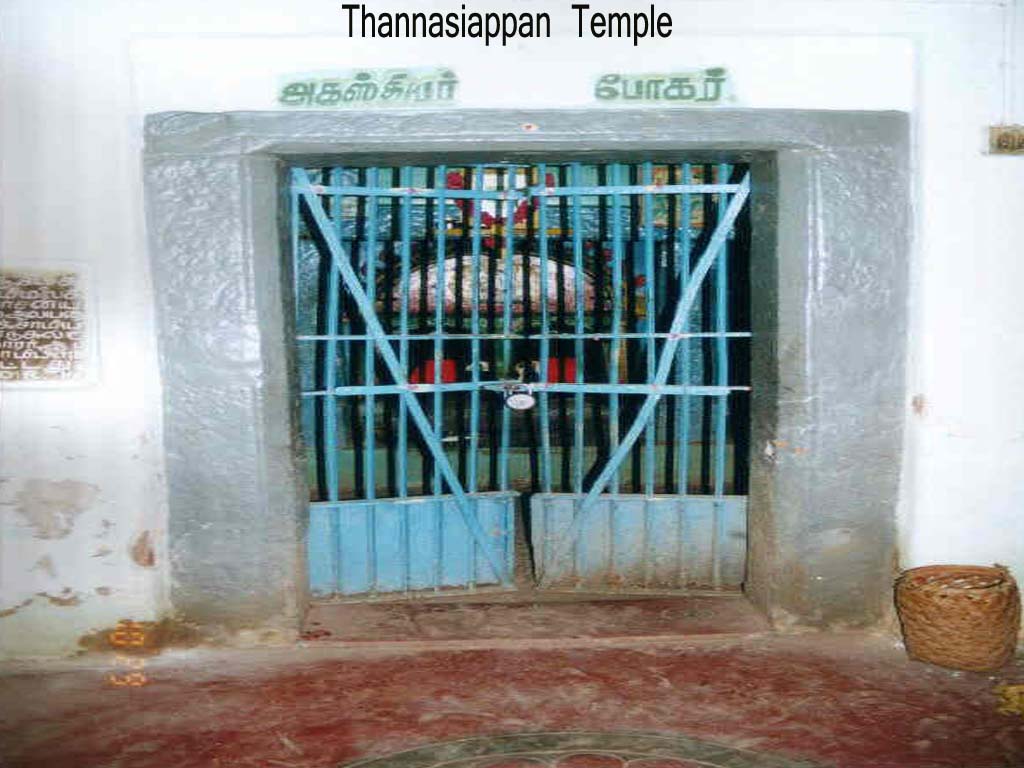
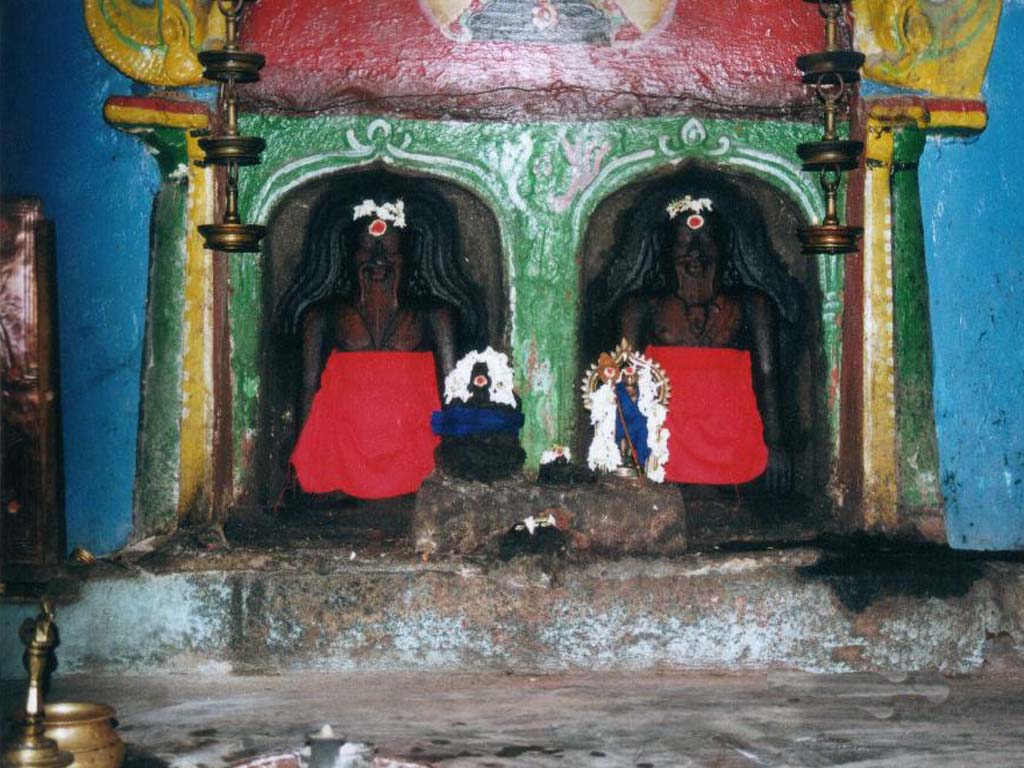
Bogar and others then decided that by using the milk and panchamirtham ( a sweet recipe ) poured on the idol, one can extract the medicine from the idol. The milk and panchamritham then becomes medicine to cure disease. After installing Lord Murugan Navabashana idol at the Palani Hill, Bogar used to worship it with milk abishegam ( pouring milk on the idol ) and panchamirtha abishegam ( pouring panchamirtham on the idol ). His disciple Pulipani siddhar then took over the job of Lord Murugan pooja after Bogar went into Nirvigalpa Samadhi - the highest samadhi stage; where the Mind dissolves with Matter and Energy. Bogar Samadhi is inside Palani Murugan temple at Palani Hill. Actually Bogar himself constructed his samadhi exactly under the Lord Murugan Navabasha idol and went into Nirvigalpa Samadhi there. The entrance to his samadhi is a cave like structure, now also worship for this great siddhar is conducted at this entrance where he is last seen by his disciples which is at the Palani temple.
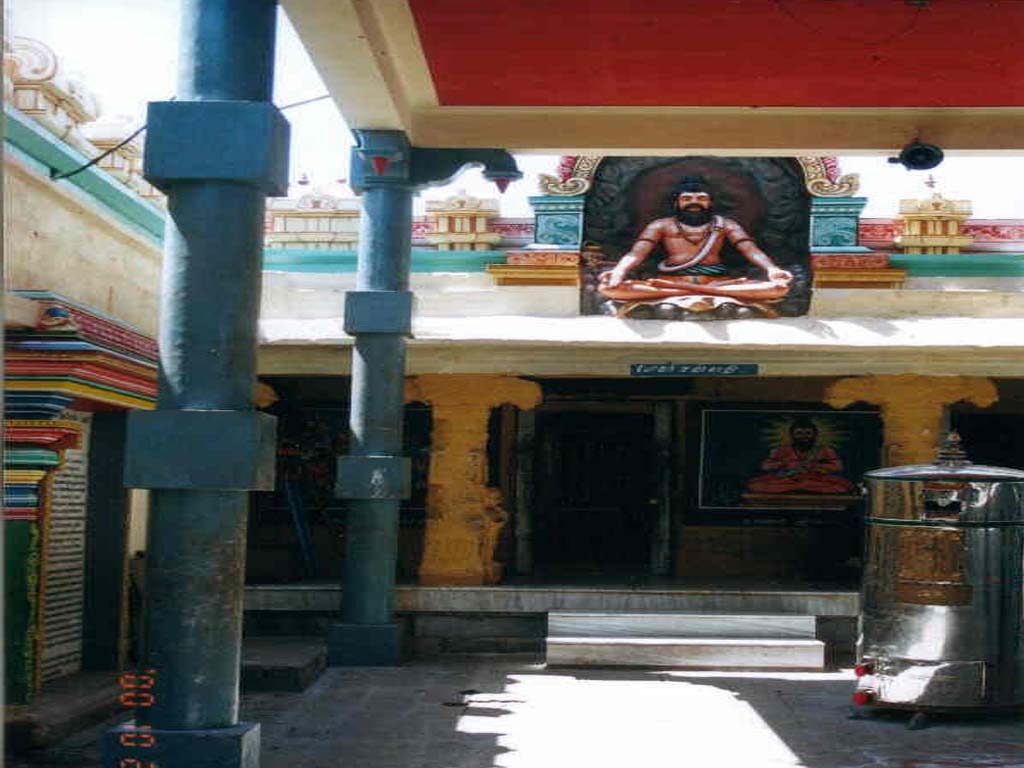
About Navapashanam
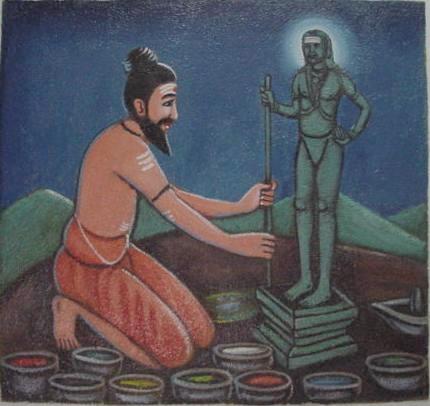
Palani has been mentioned in the Tamil Sangam Literature as "Podhini", which came to be called as "Palani" later, according to the historions. In "Thirumurukatruppadai"( a Sangam Literature ) Palani has been mentioned as the 3rd "PadaiVeedu". This was the southern end of the Kongu Nadu and edicts refer to this place as "Vaiyapuri Nadu", which was ruled by king "Vaiyapuri Kopperumbaegan". Many "Siddhas" are said to have lived in this region. The idol of Palani Andavar is said to have been made of "Navapashanam".
The deity of Palani is known as Dandayudhapani Swami, the Lord having the Staff in his Hand. The deity at the sanctum sanctorum is made out of an amalgam of nine minerals popularly called Navapashanam. Some people say it is a combination of medicinal herbs.
The deity is in a standing position with a baton in his hand. He has the look of a person who has renounced all worldly pomp. He has just a loincloth besides the baton. He is a mute messenger of the great precept 'Renounce all to reach Me'. The icon is unique in the whole world. It was made by siddha Bhogar by combining nine poisonous substances (Navapashanam). Murugan signifies beauty and Lord Murugan of Kurinji land is the god of Beauty and Youth.
When all the ingredients are heated and filtered a semi liquid mass hardens into a stone. Everyday ablutions are performed. During Kartigai days it will be in hundreds. These ablution provide not only grace of Muruga it also cures for ills. When milk ablutions are performed, the milk after coming in contact with the Navapashana body of Muruga absorbs all its medicinal qualities. The beauty is that for a long time the milk is spoiled. Similar is the case with sandal ablution. The sandal paste over the body of Muruga is removed in the shade. A process to preserve the sandal paste has been finished by Somaley.
Bhogar Samathi (Bhogar Shrine)
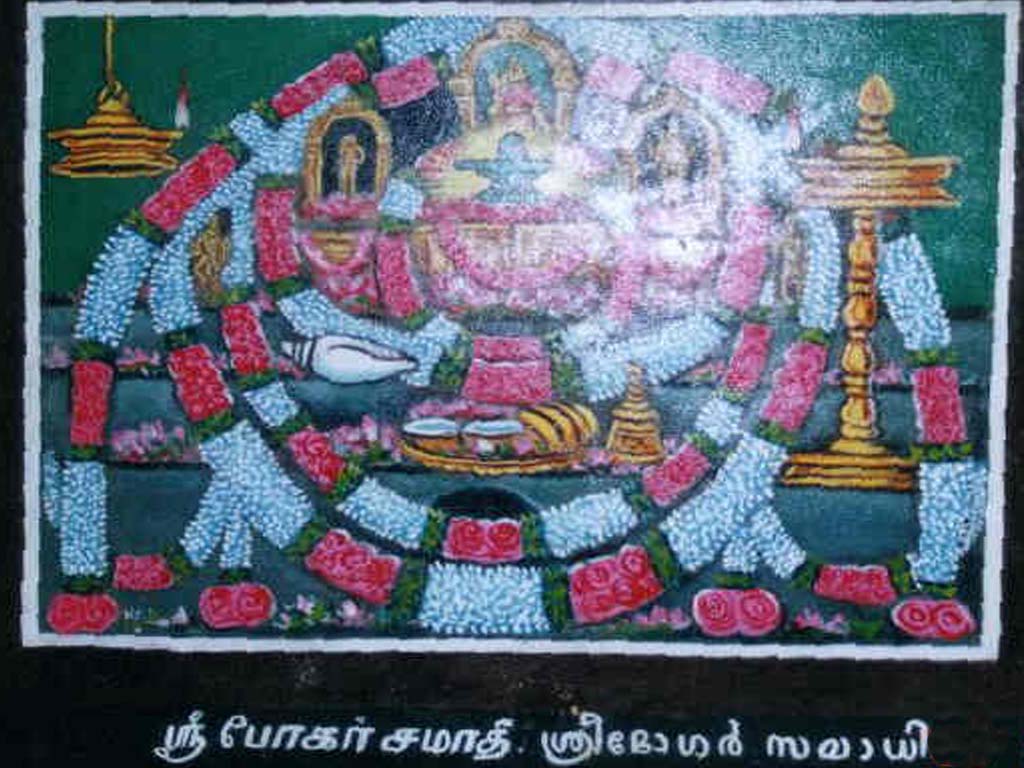
No pilgrim should fail to mark attendance at the shrine of Bhogar in the southwestern corridor of the temple. He it was who created the Navapashanam image and consecrated the deity.
Bhogar is believed to have lived in the beginning of Kali Yuga, i.e. before 3,000 B.C. and traveled widely in the Near- and Far East. He is said to have been a rare mathematical prodigy, a diplomat of great caliber and an expert in the field of medicine. He realized the importance of Muruga worship and conferred with siddhars on the form in which Muruga's image should be installed atop the hill. He created the amalgam of nine chemicals and did daily services.
Bhogar's body rests here. The image of Nava Dûrgâ or Bhûvanesvari and the Maragadha (emerald) Siva Lingam worshipped by him are found here. An underground passage is said to link the sanctum sanctorum with the Bhogar shrine.
Siddhar Bogar's shrine, his Samadhi is what remains today as a powerful example of the difference in lifestyle, the deep rooted principles and values that once governed the people of this soil. We all live in the same world, making use of probably the same things to evolve, yet the intensity of worship and the much needed awareness to realize these methods of living are not half as strong now.
Few things come to light in the life of this phenomenon called Siddhar Bogar. He initially worshiped the Kamandalam on the peetha and the rishi muni dandam or staff atop the hill at Palani. He subsequently prepared the idol of Muruga (Dandapani vigraha) out of 9 poisons that magically cures people of their ailments when the fluids of libation are consumed after abhishekam. Bogar is known to have made his own Samadhi, his final resting place in this form which is a cave he dug out, a chamber under the very idol of Muruga (Dandapani vigraha). It was here that he took Jeeva Samadhi. Siddhar Bogar lived for aprox. 300 years and 18 days.
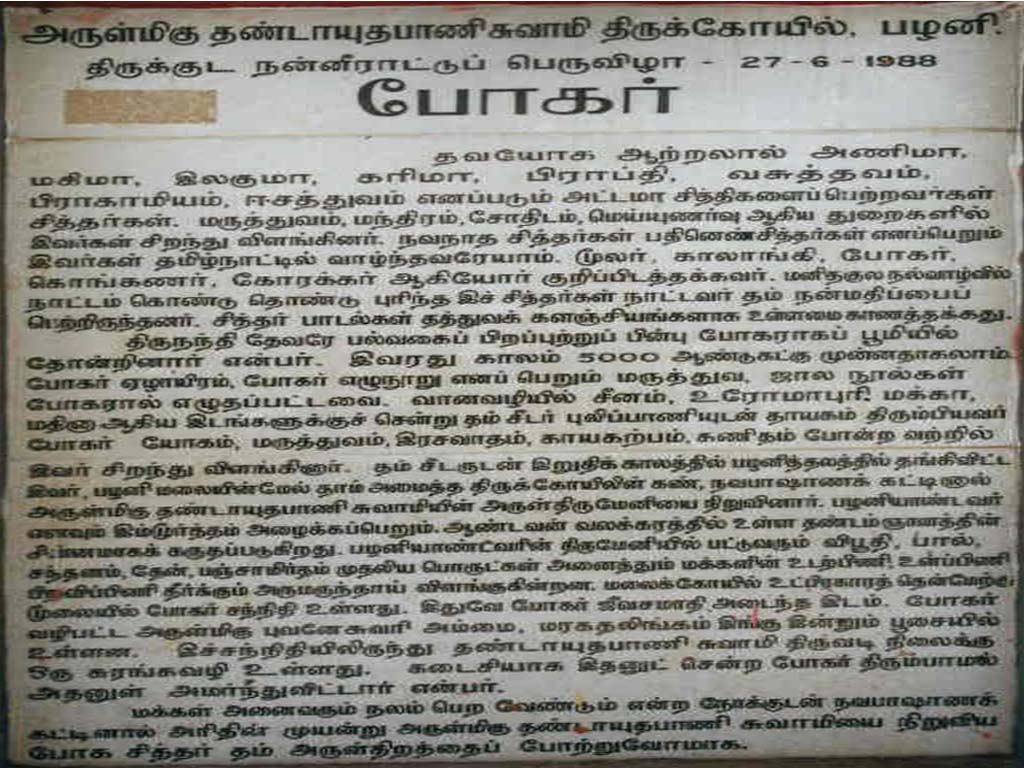
The life of Siddhar Bogar is amazing, intriguing and gives us an idea of a world we wish we were a part of. Few have brought alive the picture of his Samadhi, and among those who have is Artist Silpi who has vividly captured every essence of what is found back in this cave that still exalts Siddhar Bogar's energy. This is a potent place of worship, which is crowned by a throne that was created by Siddhar Bogar himself. He used the 8 shaktis, the nava Durga, Sri Bhuvaneshwari, and most importantly the Maragadha Lingam (emerald Linga) that crowns this throne. It is a complex vigraha comprising of a stone altar that hosts the main emerald Shiva Linga at the top surrounded by the Goddesses at various levels. As part of the worship is also the present the right faced conch shell, and two yantras that capture the essence of the Goddess and Lord Shiva within them.
It is a potent world, energized not just by the presence of a dual yantra, but by the powerful magnetic field present in the Samadhi of this great Siddhar. The passage way to heaven is not just a journey down spiritualism, but a unique magical world of powers expressed in various forms depicted through the life of this great Siddhar. Few others are blessed to express this beauty by representing it in color for lesser mortals like us. The profound depth of sacred reality is rendered by Artist Silpi in this painting who spent 40 days within this cave to capture this unique throne for the world to witness, a throne found nowhere else, a profound example of salvation being found in intense devotion be it science, medicine, art and sculpture to inspire humanity in the years to come.
Bhogar Videos:
Bogar Pokkisam-1

Bogar Pokkisam-2






